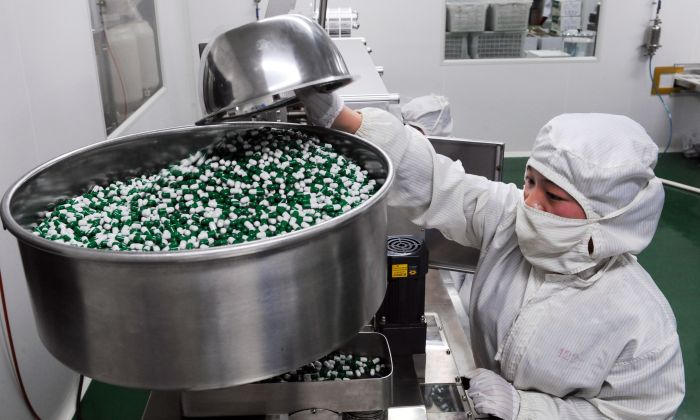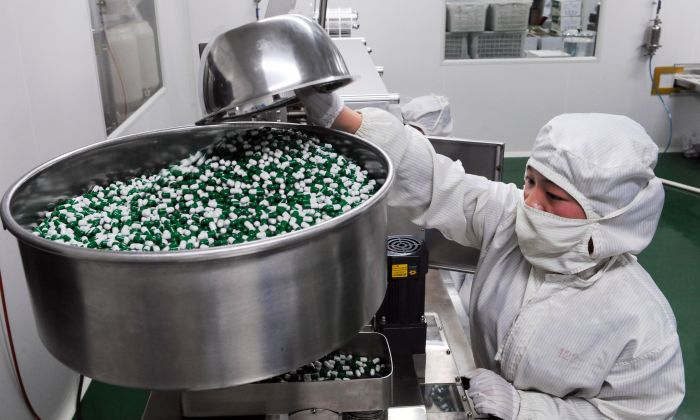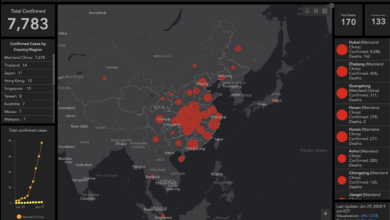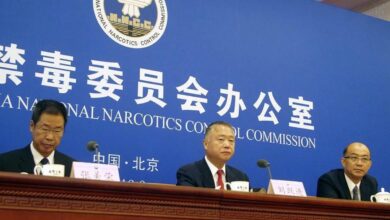
US Medication Reliance: Precarious Risk from Chinas 80% Share
The precarious risk from China producing 80 percent of US medications sets the stage for a discussion about a complex and potentially dangerous situation. We’ve become heavily reliant on China for our essential medicines, and this dependence comes with significant economic, political, and health security risks.
Imagine a world where vital medications become scarce or unaffordable due to disruptions in the supply chain. This scenario, while seemingly far-fetched, is a very real possibility, and it’s something we need to address urgently.
The rise of China as a pharmaceutical powerhouse is a fascinating story. From humble beginnings, China has become a dominant force in global medication manufacturing. This dominance is largely due to factors like lower labor costs and a willingness to embrace new technologies.
However, this reliance on a single source for our essential medicines comes with significant risks. It creates a vulnerability that could have devastating consequences for our healthcare system and our national security.
The Scope of China’s Role in US Medication Production

China’s emergence as a dominant force in the global pharmaceutical industry, particularly in supplying the US market, is a complex phenomenon with a rich history and significant implications for the US healthcare system. This evolution has been driven by a confluence of factors, including cost advantages, technological advancements, and strategic policy decisions.
The Historical Development of China’s Dominance
China’s journey to becoming a major player in US medication manufacturing can be traced back to the late 20th century. The country’s economic reforms and opening up to global markets created a favorable environment for the growth of its pharmaceutical industry.
This was further fueled by the availability of a large and skilled workforce, coupled with relatively low labor costs compared to developed countries.
Factors Contributing to China’s Rise
Several key factors have contributed to China’s ascent as a major supplier of pharmaceuticals to the US:
- Cost Advantages:China’s lower labor costs and manufacturing expenses provide a significant cost advantage for pharmaceutical companies seeking to reduce production costs. This has made Chinese manufacturers highly competitive, particularly for generic medications and active pharmaceutical ingredients (APIs).
- Government Support:The Chinese government has actively promoted the development of its pharmaceutical industry through policies that encourage investment, research, and technological advancements. This support has helped create a conducive environment for the growth of the sector.
- Technological Advancements:China has invested heavily in developing its manufacturing capabilities, adopting advanced technologies and processes to enhance efficiency and quality control. This has enabled Chinese manufacturers to meet the stringent quality standards required by the US market.
Statistics on US Medication Sourcing from China
China’s dominance in US medication production is evident in the high percentage of medications sourced from the country. According to the US Food and Drug Administration (FDA), approximately 80% of active pharmaceutical ingredients (APIs) used in US medications are manufactured in China.
This reliance on a single source for such a critical component of the US healthcare system raises concerns about supply chain vulnerabilities and potential risks to drug availability.
Potential Risks Associated with Over-Reliance on China
The United States’ reliance on China for a significant portion of its pharmaceutical supply chain poses a number of potential risks. These risks extend beyond economic concerns, encompassing healthcare security, affordability, and geopolitical implications.
Economic Risks
Over-reliance on China for essential medications presents significant economic risks. The US economy could be vulnerable to disruptions in the supply chain, leading to shortages of crucial drugs. This could result in:
- Increased drug prices due to limited supply and higher import costs.
- Reduced access to essential medications for patients, potentially leading to increased healthcare costs and negative health outcomes.
- Disruptions to research and development activities due to supply chain issues, hindering the development of new and innovative treatments.
Impact on US Healthcare Security and Affordability
Disruptions in the supply chain could have a devastating impact on US healthcare security and affordability.
It’s unsettling to think that 80% of our medications come from China, leaving us vulnerable to supply chain disruptions. While the political landscape shifts with news like Biden projected to win Virginia and North Carolina, Sanders claims victory in his home state Vermont , the issue of our reliance on China for essential medicines remains a pressing concern.
We need to seriously consider diversifying our pharmaceutical production to ensure the health and well-being of our nation.
- Shortages of essential medications could lead to a surge in demand, driving up prices and making treatments inaccessible for many.
- The lack of readily available medications could result in increased hospitalizations and emergency room visits, further straining the healthcare system.
- The US healthcare system might face challenges in managing the increased demand for medications, leading to longer wait times and potentially compromising patient care.
Geopolitical Implications
The US’s dependence on China for pharmaceuticals has significant geopolitical implications.
- China could leverage its position as a major supplier to exert political influence on the US.
- The US’s reliance on China could create vulnerabilities in its national security, particularly in the event of a conflict or political tension.
- The US might face pressure to align its foreign policy with China’s interests to ensure a stable supply of essential medications.
Diversification Strategies and Mitigation Measures
The over-reliance on China for pharmaceutical production poses a significant risk to the US healthcare system. Diversifying the supply chain and implementing mitigation measures are crucial steps to ensure the availability of essential medications in the face of potential disruptions.
Strategies for Diversifying the Pharmaceutical Supply Chain
Diversifying the pharmaceutical supply chain involves shifting production away from a single source, such as China, and creating a more distributed and resilient network. This can be achieved through a combination of strategies:
- Reshoring and Nearshoring:Encouraging the return of pharmaceutical manufacturing to the US or relocating production to nearby countries with strong regulatory frameworks and skilled labor forces. This reduces dependence on distant suppliers and allows for faster response times in case of disruptions.
- Developing Domestic Manufacturing Capabilities:Investing in research and development, infrastructure, and training programs to bolster domestic pharmaceutical manufacturing capabilities. This fosters innovation, creates jobs, and enhances the US’s ability to produce essential medications independently.
- Strategic Partnerships with Allied Countries:Establishing partnerships with countries that share similar values and regulatory standards to develop joint production facilities and share knowledge and resources. This fosters collaboration and strengthens the global pharmaceutical supply chain.
- Supporting Small and Medium-Sized Enterprises (SMEs):Providing financial incentives and technical assistance to support the growth of SMEs in the pharmaceutical sector. This fosters competition, innovation, and a more diverse supply chain.
Incentivizing Domestic Production of Medications
To encourage domestic production of medications, the US government can implement a range of incentives:
- Tax Credits and Subsidies:Providing tax credits and subsidies to pharmaceutical companies that manufacture medications within the US. This can help offset the higher costs associated with domestic production and make it more financially attractive.
- Government Procurement Preferences:Prioritizing the purchase of medications manufactured domestically by government agencies and institutions. This creates a guaranteed market for US-produced medications and encourages investment in domestic manufacturing.
- Streamlining Regulatory Processes:Simplifying and expediting the approval process for new drugs and manufacturing facilities in the US. This reduces the time and costs associated with bringing new medications to market and encourages domestic production.
- Investing in Research and Development:Funding research and development initiatives that focus on the production of essential medications within the US. This fosters innovation and enhances the US’s ability to manufacture complex medications domestically.
Creating a Resilient Pharmaceutical Supply Chain
Building a resilient and secure pharmaceutical supply chain requires a multi-faceted approach:
- Strategic Stockpiling:Maintaining a strategic stockpile of essential medications, particularly those with high demand or limited supply. This ensures the availability of critical medications during emergencies or disruptions.
- Developing Alternative Sources:Identifying and cultivating alternative sources of raw materials and active pharmaceutical ingredients (APIs) to reduce dependence on single suppliers. This can involve exploring domestic sources or diversifying sourcing from multiple countries.
- Enhancing Supply Chain Visibility:Implementing robust tracking and tracing systems to monitor the movement of medications throughout the supply chain. This provides real-time visibility into potential disruptions and enables rapid response measures.
- Strengthening Cybersecurity:Protecting pharmaceutical manufacturing facilities and supply chain systems from cyberattacks, which can disrupt production and distribution. This involves implementing robust cybersecurity measures and training employees on best practices.
Impact on Consumers and the Healthcare System
The over-reliance on China for pharmaceutical production poses significant risks to the US healthcare system and its consumers. Disruptions in the supply chain, price fluctuations, and potential shortages can have far-reaching consequences for patients and healthcare providers.
It’s unsettling to think that 80% of our medications come from China. This reliance creates a precarious risk, especially considering the recent news about China’s coronavirus numbers not adding up and the White House’s skepticism. Transparency is crucial, and any uncertainty regarding the pandemic’s true impact in China only intensifies our dependence on their pharmaceutical industry.
Impact of Disruptions in the Pharmaceutical Supply Chain
A disruption in the pharmaceutical supply chain, caused by factors like natural disasters, political instability, or global pandemics, could have devastating consequences for patients.
- Delayed Treatments:Patients may face delays in receiving essential medications, leading to worsening health conditions and potential complications.
- Increased Hospitalizations:Shortages of critical medications could lead to increased hospitalizations and healthcare costs, straining the already overburdened healthcare system.
- Access to Treatment:Patients with chronic conditions may be unable to access essential medications, potentially leading to life-threatening situations.
Price Increases and Medication Shortages
A shift towards domestic production could lead to price increases for medications. This is because US manufacturing costs are generally higher than in China. However, increased domestic production could also lead to greater competition, potentially mitigating some of the price increases.
- Higher Manufacturing Costs:Domestic production often involves higher labor costs, environmental regulations, and research and development expenses, which can translate to higher medication prices.
- Potential for Price Stabilization:Increased competition from domestic manufacturers could lead to price stabilization or even price reductions over time, as companies strive to gain market share.
- Potential for Shortages:A rapid shift towards domestic production could create a temporary shortage of certain medications, as the domestic industry ramps up production.
Building a More Sustainable and Resilient Healthcare System, Precarious risk from china producing 80 percent of us medications
Building a more sustainable and resilient healthcare system requires a multi-faceted approach that addresses both supply chain vulnerabilities and affordability concerns.
The fact that China produces 80% of our medications is a precarious risk, especially considering the recent political and economic tensions. It’s a reminder of how interconnected our world is, and how vulnerable we can be to disruptions in supply chains.
It’s interesting to see how this issue plays into the current political climate, with Bernie Sanders’ surge in popularity having party elders rattled as Nevada is poised to boost his momentum. It’s clear that the issue of healthcare and drug pricing is a major concern for voters, and this could lead to a renewed focus on diversifying our pharmaceutical supply chain and reducing our reliance on China.
- Diversification of Supply Chains:The US should encourage pharmaceutical companies to diversify their manufacturing locations, reducing reliance on any single country.
- Investment in Domestic Production:Government incentives and investments can encourage pharmaceutical companies to establish or expand domestic manufacturing facilities, creating jobs and boosting the domestic economy.
- Research and Development:Investing in research and development can help the US pharmaceutical industry develop new technologies and manufacturing processes, enhancing competitiveness and innovation.
- Strategic Stockpiling:Maintaining a strategic stockpile of essential medications can help mitigate the impact of disruptions in the supply chain, ensuring access to critical treatments during emergencies.
International Cooperation and Collaboration
The over-reliance on a single country for a critical component of the global healthcare system, such as pharmaceuticals, poses significant risks. International cooperation is crucial to mitigate these vulnerabilities and ensure a resilient and secure pharmaceutical supply chain. By fostering collaboration and sharing best practices, nations can collectively address the challenges posed by global pharmaceutical production and distribution.
Multilateral Organizations’ Role in Fostering Collaboration
Multilateral organizations play a vital role in promoting international cooperation and sharing best practices in the pharmaceutical sector. These organizations provide a platform for countries to collaborate on various initiatives, including:
- Developing global standards for pharmaceutical manufacturing and quality control.
- Sharing information and data on drug shortages and supply chain disruptions.
- Facilitating joint research and development efforts to address emerging health threats.
- Providing technical assistance and capacity-building programs to developing countries.
Examples of multilateral organizations actively involved in pharmaceutical cooperation include the World Health Organization (WHO), the International Pharmaceutical Federation (FIP), and the World Trade Organization (WTO). These organizations work to ensure the availability, affordability, and quality of essential medicines globally.
Closing Summary: Precarious Risk From China Producing 80 Percent Of Us Medications
The dependence on China for our medications presents a critical challenge that requires a multifaceted approach. Diversifying our pharmaceutical supply chain, investing in domestic production, and fostering international cooperation are crucial steps towards a more resilient and secure healthcare system.
We need to take proactive measures to mitigate the risks associated with this reliance and ensure that access to essential medications remains a priority for all Americans. By acknowledging the risks and implementing strategic solutions, we can safeguard our healthcare system and protect the health and well-being of our nation.





